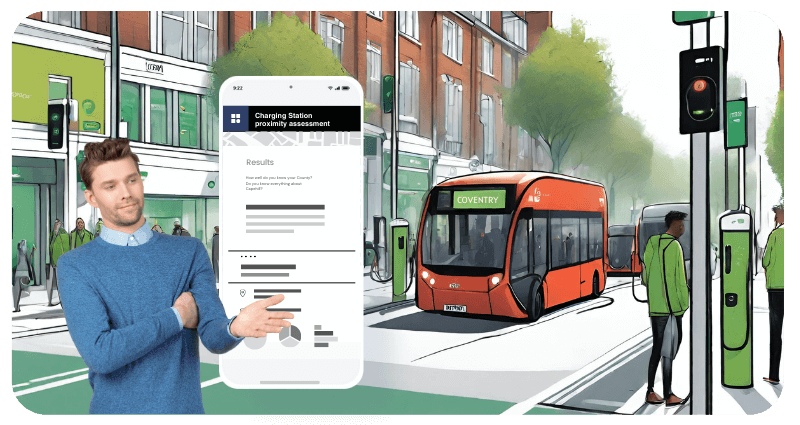This publication aims to establish that community engagement is now a vital factor in the development of Transport and Social Mobility systems that address real local needs and promote social access. It is therefore important that cities and regions investing in transport infrastructure understand and incorporate community perspectives for project success and social results.
Understanding the Transport-Social Mobility Link
Transport infrastructure affects the ability of people to access jobs, education, and opportunities. According to the Social Mobility Commission, residents of areas with poor transport links spend as much as 40% more time on their daily commutes and have access to 50% fewer job opportunities than residents of areas with good transport links.
It is noted that traditional planning approaches often fail to capture important local information. Transport for London’s most recent study established that 30% of transport projects that have been implemented in the past required rewriting of strategic plans within the first year due to unforeseen community needs, which in turn led to additional costs and delays.
The Power of Community Input
New engagement methods are changing the manner in which transport projects are designed and executed. The West Midlands Combined Authority’s transport strategy consultation involved 65% more resident participation than usual consultation methods through the utilization of digital platforms and AI analysis. More participatory engagement resulted in a few important project changes that addressed the needs of the community better.
The study presents the following results: Traditional consultation methods usually address only 15-20% of the affected population. Digital engagement platforms are able to increase the participation rates to 40-50%. It has also been established that projects that involve thorough community engagement are 60% more likely to achieve their social mobility goals than those that do not. Real-World Impact Manchester’s current bus network redesign clearly shows the importance of community participation.
The project collected feedback from 20,000 residents through digital channels and discovered unrecognized patterns of travel and needs of the community. This led to: The routes became 25% more efficient. Employment centers became 35% more accessible. The average journey time for key workers was cut by 40%. The project has been successful and can, therefore, be considered as a reference for other UK cities which are trying to improve their transport infrastructure to support social mobility. Cost and Efficiency Benefits Community involvement can greatly affect the costs and time frame of a project.
Projects that engage adequately with the community experience 30% less delays as a result of public opposition, 25% less post-implementation modifications, and 20% better alignment with actual usage patterns. – The National Infrastructure Commission
The National Infrastructure Commission has noted that projects that engage adequately with the community experience 30% less delays as a result of public opposition, 25% less post-implementation modifications, and 20% better alignment with actual usage patterns. These improvements mean that a lot of money can be saved because estimate suggests that thorough community engagement can save projects between 15-20% of their resources.
Technology’s Role
Today’s engagement tools are changing the manner in which communities engage with transport planning. For instance, through the use of AI analysis, thousands of community responses can be analyzed within hours instead of weeks, and patterns and preferences that could have been lost can be determined. For example, Leeds City Council’s transport consultation was analyzed by AI within three days, to process 15,000 responses, a task that would have taken months to accomplish. This rapid analysis allowed planners to: Identify quickly the areas that require more attention, determine the overall travel patterns, modify plans towards meeting the needs of the community.
Transport connectivity has a positive impact on social mobility. Research indicates that a 20-minute reduction in commute time can enhance job access by 30%. The impact is especially noticeable in: Unemployment areas, Opportunity zones for education, Healthcare dissemination areas. As cities keep on developing, community engagement will be vital in transport planning. The UK government’s ‘leveling up’ initiative means that transport systems need to be local community-focused to enhance social mobility. Some examples include Manchester and Leeds, which show that proper community involvement can help: increase the project’s speed and efficiency; save costs. Improve the project’s results. Increase social mobility.
Towards success
Transport planners and local authorities wanting to improve their community engagement should: Spend resources on up-to-date engagement tools that can engage more people. ; AI tools should be employed to analyze the feedback received from the community since this helps to work through the data quickly; Community insights should be incorporated into the planning process at the beginning; Social mobility effects should be tracked.
The success of the Transport and Social Mobility agenda depends on the development of transport systems that address the needs of communities and enhance social mobility. In applying new engagement approaches and technologies, cities can design transport infrastructure that not only transports people better but also opens up opportunities. Thus, in the United Kingdom where the government is still investing heavily in the transport infrastructure, the role of community engagement will be essential in producing the best social and economic returns from these investments.
Need help engaging your community to understand their? Our specialists and AI platform can help you get ahead. Start building better connections today.


